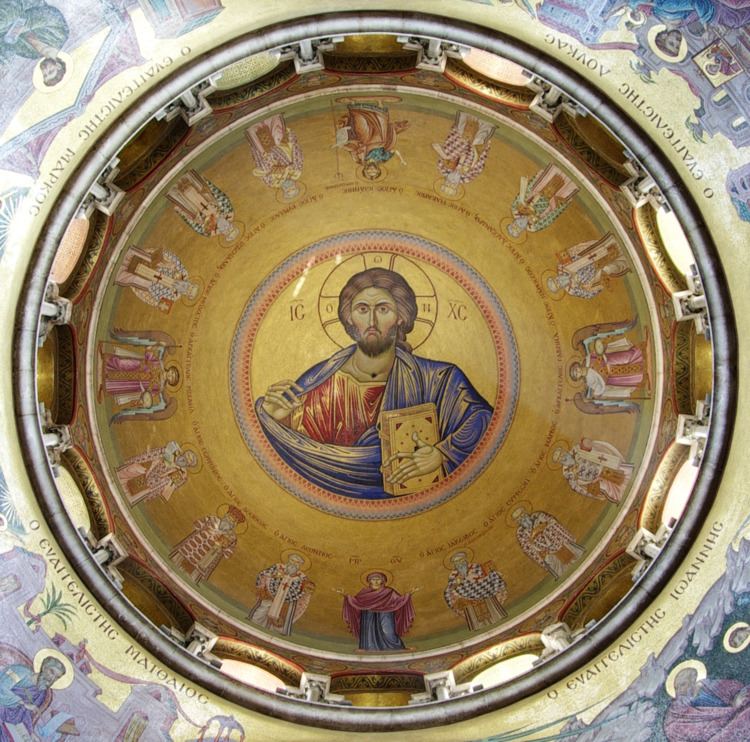 | ||
This is a timeline of the presence of Orthodoxy in Greece. The history of Greece traditionally encompasses the study of the Greek people, the areas they ruled historically, as well as the territory now composing the modern state of Greece.
Contents
Christianity was first brought to the geographical area corresponding to modern Greece by the Apostle Paul, although the church's apostolicity also rests upon St. Andrew who preached the gospel in Greece and suffered martyrdom in Patras, Titus, Paul's companion who preached the gospel in Crete where he became bishop, Philip who, according to the tradition, visited and preached in Athens, Luke the Evangelist who was martyred in Thebes, Lazarus of Bethany, Bishop of Kition in Cyprus, and John the Theologian who was exiled on the island of Patmos where he received the Revelation recorded in the last book of the New Testament. In addition, the Theotokos is regarded as having visited the Holy Mountain in 49 AD according to tradition. Thus Greece became the first European area to accept the gospel of Christ. Towards the end of the 2nd century the early apostolic bishoprics had developed into metropolitan sees in the most important cities. Such were the sees of Thessaloniki, Corinth, Nicopolis, Philippi and Athens.
By the 4th century almost the entire Balkan peninsula constituted the Exarchate of Illyricum which was under the jurisdiction of the Bishop of Rome. Illyricum was assigned to the jurisdiction of the Patriarch of Constantinople by the emperor in 732. From then on the Church in Greece remained under Constantinople till the fall of the Byzantine empire to the Ottoman Empire in 1453. As an integral part of the Ecumenical Patriarchate, the church remained under its jurisdiction until Greek independence. Under Ottoman rule, up to "6,000 Greek clergymen, ca. 100 Bishops, and 11 Patriarchs knew the Ottoman sword".
The Greek War of Independence of 1821–28 created an independent southern Greece, but created anomalies in ecclesiastical relations since the Ecumenical Patriarch remained under Ottoman tutelage, and in 1850 the Endemousa Synod in Constantinople declared the Church of Greece autocephalous.
The cultural roots of both Byzantine and modern Greece cannot be separated from Orthodoxy. Therefore, it was natural that in all Greek Constitutions the Orthodox Church was accorded the status of the prevailing religion.
In the 20th century, during much of the period of communism, the Church of Greece saw itself as a guardian of Orthodoxy. It cherishes its place as the cradle of the primitive church and the Greek clergy are still present in the historic places of Istanbul and Jerusalem, and Cyprus. The autocephalous Church of Greece is organised into 81 dioceses, however 35 of these – known as the Metropolises of the New Lands – are nominally under the jurisdiction of the Ecumenical Patriarchate of Constantinople but are administered as part of the Church of Greece; although the dioceses of Crete, the Dodecanese, and Mount Athos are under the direct jurisdiction of the Patriarchate of Constantinople.
The Archbishop of Athens and All Greece presides over both a standing synod of twelve metropolitans (six from the new territories and six from southern Greece), who participate in the synod in rotation and on an annual basis, and a synod of the hierarchy (in which all ruling metropolitans participate), which meets once a year.
The government observes several religious holidays as national holidays including Epiphany, Clean Monday (the start of Great Lent), Good Friday, Easter Sunday, Easter Monday, Holy Spirit Day, the Dormition of the Theotokos and Christmas.
Among the current concerns of the Church of Greece are the Christian response to globalization, to interreligious dialogue, and a common Christian voice within the framework of the European Union.
The population of Greece is 11.4 million (2011), of which 95% to 98% are Greek Orthodox.
Third Hellenic Republic (from 1974)
Member State of the European Community (European Union)
